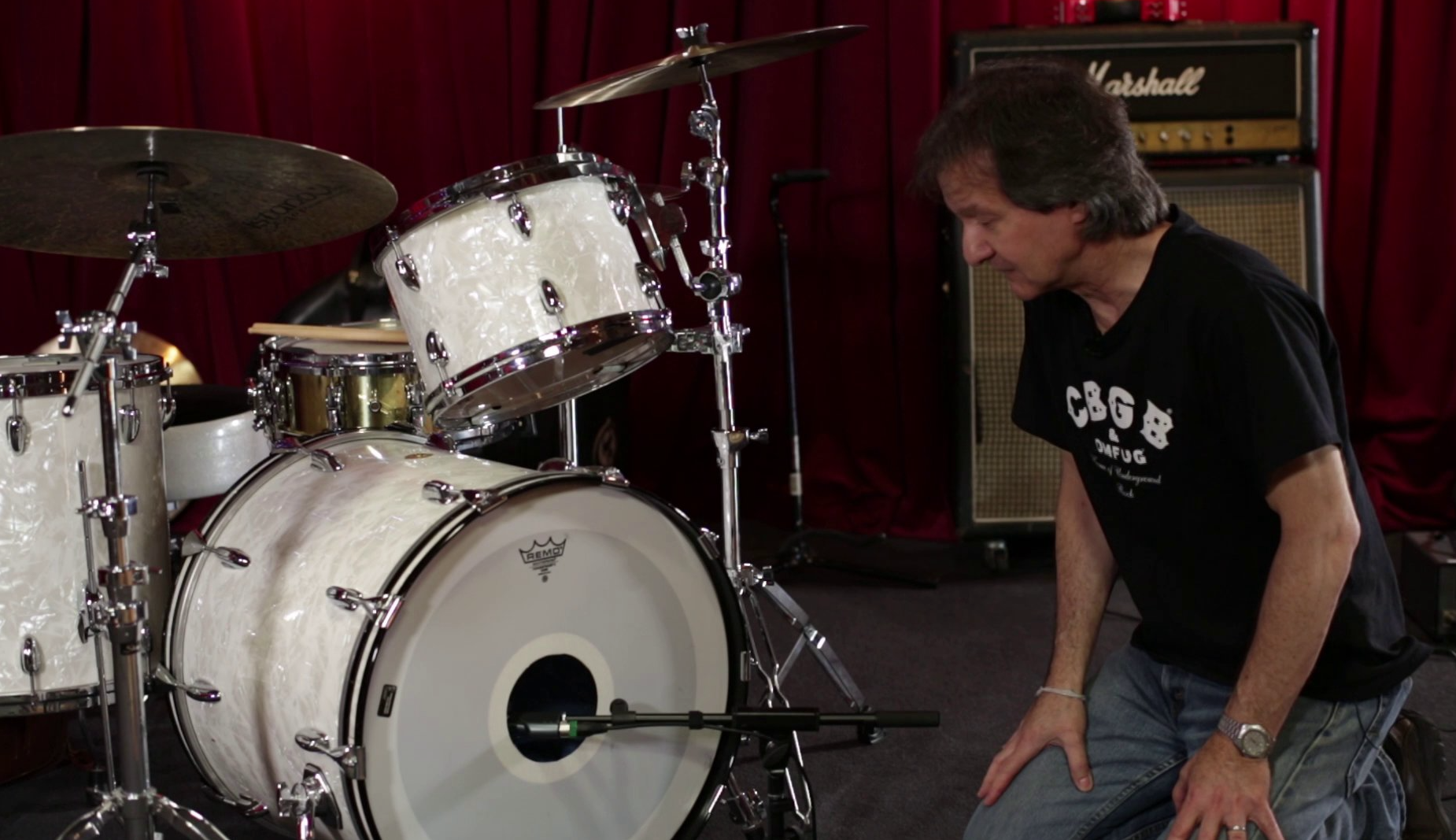There is something beautiful about simplicity, especially when it comes to music making.
Take one of the most complex instruments to record, an acoustic drum set. Typically the modern studio reaches a dozen or more microphones to capture the entire kit well. But legendary producer/engineer Bob Clearmountain (The Rolling Stones, Bruce Springsteen) and drummer Matt Chamberlain (solo artist, session musician, David Bowie, Tori Amos, Soundgarden) shows you an even simpler way: the two mic method.

“The Perfect Home Studio Method”
Mixing From The Beginning:
He placed the kick drum mic inside, rather than just outside the hole. He said that the hole on the kick drum resonant head creates a bunch of concentrated air that blasts the diaphragm of the mic, giving you “fake” bottom end that you’d have to “filter out later”. He moved the mic to a place where he gets closer to the sound he wants to hear in the mix, rather than waiting on an EQ or filter to clean it up later.
Play Light For A Bigger Sound:
Having the final mix in mind on recording day the drummer in the video Matt Chamberlain drops a brilliant, but counter-intuitive drum recording bomb on us. “If you want a bigger, more balanced sound in the mix, play lighter on the drums.” Chamberlain explains if that drummers plays lighter than they typically do there will be better balance in the mix later on, especially if you want to compress that overhead mic.
Experiment:
“I would come in at night, after sessions when nobody was in the studio and I would tune the drums for hours, and try all kinds of different things. Just to see. And I’m not even a drummer. I can’t play drums to save my life. But I would sit there and start messing around with it until “Oh that’s starting to sound good.” or “Oh, that sounds really bad!” – Bob Clearmountain
Recording and mixing is not a science. It’s not a rigid formula. It’s an art. One that you only learn by doing.
